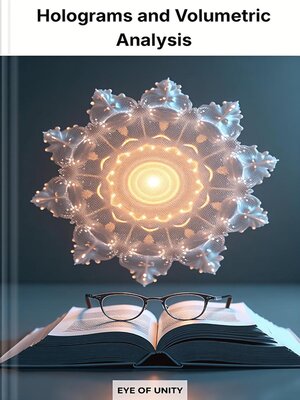
Sign up to save your library
With an OverDrive account, you can save your favorite libraries for at-a-glance information about availability. Find out more about OverDrive accounts.
Find this title in Libby, the library reading app by OverDrive.



Search for a digital library with this title
Title found at these libraries:
| Library Name | Distance |
|---|---|
| Loading... |
In an era where the boundaries of reality are continually being redefined, "Utilizing and Developing Holograms and Volumetric Analysis and its uses in the future" delves into the transformative potential of holographic technology and volumetric analysis. This book invites readers to explore how these cutting-edge advancements can revolutionize industries from healthcare to entertainment, offering a glimpse into a future where three-dimensional imaging is seamlessly integrated into our daily lives.
The importance of this topic is underscored by rapid technological advancements and increasing demand for immersive experiences. The central purpose of this book is to equip professionals, innovators, and students with a comprehensive understanding of holography's applications and the intricate science behind volumetric analysis. By providing real-world examples and empirical data, it targets an audience that includes engineers, researchers, educators, and decision-makers who seek to leverage these technologies for practical solutions.
At its core, this book addresses the challenges faced in harnessing holographic technology effectively. It explores historical milestones in holography—from Dennis Gabor's pioneering work in the 1940s to today's advanced applications in medical imaging and virtual reality. Readers will gain insights into how current trends—such as the rise of augmented reality (AR) and virtual reality (VR)—are shaping consumer expectations and driving innovation across sectors. The narrative weaves together interdisciplinary connections between art, science, engineering, and business strategy, revealing unique insights that differentiate this work from existing literature.
As global markets increasingly pivot towards digital solutions, the implications of holograms extend far beyond mere visualization; they promise enhanced data interaction capabilities that can lead to more informed decision-making processes in various fields. For instance, in healthcare, volumetric analysis can improve surgical precision through 3D imaging techniques that allow for detailed anatomical studies prior to procedures. In education, immersive holographic environments foster deeper learning experiences by allowing students to visualize complex concepts tangibly.
The book examines local contexts where these technologies are being implemented successfully while also addressing ethical considerations related to their use. Through case studies featuring companies such as Microsoft with their HoloLens technology or startups like Looking Glass Factory specializing in light field displays, readers will understand both the potential benefits and pitfalls associated with integrating holography into everyday applications.
By emphasizing authentic representation throughout its narrative—grounded in factual data—the book offers not just theoretical knowledge but also practical strategies for implementation. It serves as a vital resource for those looking to navigate the intricacies of these emerging technologies effectively.
"Utilizing and Developing Holograms and Volumetric Analysis and its uses in the future" positions itself as an indispensable guide for anyone eager to explore how these innovations can redefine industries while enriching human experience. By fostering an understanding of both technical principles and societal impacts, this work empowers readers to embrace a future where holograms are not just tools but catalysts for change across diverse domains.







